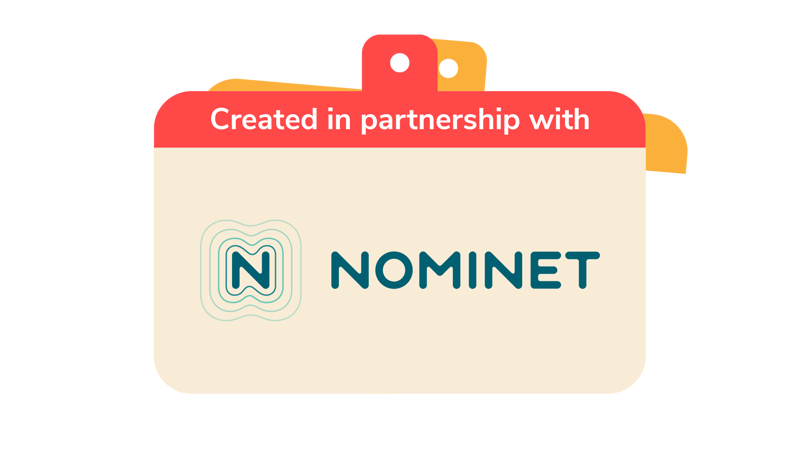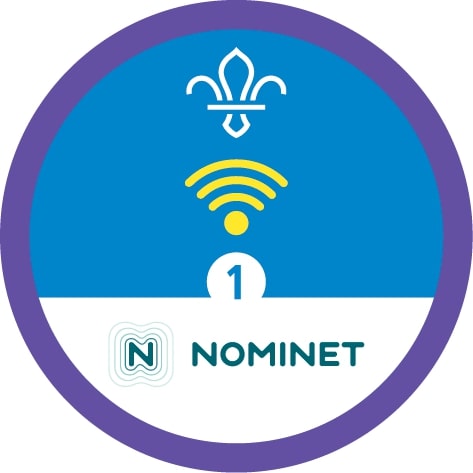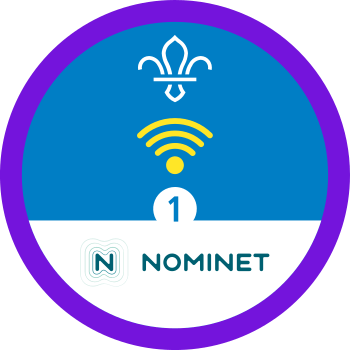
Learn how to keep personal information safe
You’ll need
- Something to mark lines (for example, chalk, masking tape, or rope)
- Hula hoops
- Beanbags
Before you begin
- Use the safety checklist to help you plan and risk assess your activity. Additional help to carry out your risk assessment, including examples can be found here. Don’t forget to make sure all young people and adults involved in the activity know how to take part safely.
- Make sure you’ll have enough adult helpers. You may need some parents and carers to help if you’re short on helpers.
Planning this activity
- Mark out a line where everyone will throw their beanbags from.
- Place four markers extending from the line in one metre intervals. For example, one marker will be one metre from the line; the next marker will be two metres from the line and so on.
Explaining the game
- Gather everyone together.
- Explain that in this game you’ll be exploring how well different people in our lives know us and what information they should have access to.
- Everyone should be instructed to stand on the throwing line.
- Explain that everyone will be given bean bags. They’ll represent different people in their lives.
- Point out each of the four markers that you placed at 1m intervals from the throwing line to the group. Explain that each marker represents how well someone knows you.
- You can decide in your group which marker represents one of the following statements:
- Very well
- Quite well
- A little bit
- Not at all
Playing the game
- Explain that participants will be given a beanbag that will represent different people in their lives. Everyone should now be given a beanbag.
- Explain that you’ll call out someone in the participant’s lives and the group need to throw their beanbag to the marker that represents how well they know the person or people mentioned
- When everyone’s ready, call out an example of someone in people’s lives. After a count of three, everyone should throw their beanbag to the marker that they think is true to them.
- Everyone should then retrieve their beanbag and return to the throwing line.
- Keep repeating this with different people represented via the beanbags.
- My classmates
- My teachers
- My extended family
- Other teachers in the school
- Strangers
- Friends I only know online
- Other young people in my school
- Family friends
- My friend’s parents
- My neighbours
- My section leader
- My school friends
- Other members in my section
Learning how to protect personal information
- Explain that in this next game everyone must decide if it’d be OK to share certain personal information about ourselves with other people, either in person or online.
- The beanbags will now represent different pieces of information about the participants.
- Each marker now represents one of the following statements:
- I’d tell them if I knew them very well
- I’d tell them if I knew them quite well or a little bit
- I’d tell them if I didn’t know them at all
- I wouldn’t share this
- Explain that a type of personal information, such as address, will be read out. People should think about whether they would tell someone this information, depending on how well they knew them. You could think about the types of people in the first game and how will you think you know them to help you decide.
- When they’ve made a decision, everyone should throw their beanbag to the marker of who’d they share that information with. For example, sharing ‘what the weather is today’ is OK to share with someone you didn’t know them at all, but ‘the name of your school’ is something that you shouldn’t share.
- Everyone should be given a beanbag and instructed to stand at the throwing point.
- You should consider having a discussion after each time the beanbags are thrown about why people chose the answer they did. You could discuss why people think the information was appropriate or not appropriate to share.
- After the throw, everyone should then retrieve their beanbag and return to the throwing point.
- Keep playing with different bits of personal information represented via the beanbags.
- Your full name
- Your pets’ names
- Your school’s name
- A photo of your food
- Your birthday
- Music you’re listening to
- Your email address
- Your phone number
- Photos of your pets
- Your passwords
- Your home address
- Where you are right now
- Your sock colour
- Your username/nickname
- What the time is
- What today’s weather is
- Your favourite superhero
- Your friends’ names
Talk about keeping safe
- Tell everyone that it’s always important to think about the things about us that we can share safely and who we can share them with. We should always keep personal things, such as our address, password, emails, phone number, full name, school and date of birth private. We can always check with a trusted adult if we’re unsure what we should be sharing.
- If someone does ask us for personal information, either online or in person, remember that we shouldn’t share this information and to tell a trusted adult about it.
- Tell everyone that it’s even more important to be mindful of the information we’re sharing online. There are lots of ways that people try to trick you into trusting them online, such as by pretending to be someone else.
- Even if you like and trust someone you’ve met online, never share personal information with them, such as your address, full name, or where you go to school.
- It’s important to understand how to stay safe online and keep your personal information safe, especially on social media. Some top tips are:
- Always check what people can see in your privacy settings.
- Log out of websites on shared devices.
- Remember, it’s always OK to say ‘no’ politely and firmly if you don’t want someone else to post information about you or photos of you online.
- If someone shares something that makes us feel unhappy or uncomfortable, tell a trusted adult. We can also report people, photos or posts that ask for or share our personal information to a platform.
- Remember that people can use small clues, such as a school logo in a photo, to find out a lot about us.
- Always think before you post. It’s best never to upload or share anything you wouldn’t want your parents, carers, teachers or future employers seeing. Once you post something, you lose control of it, especially if someone else screenshots or shares it.
- Remember to check your contact or follower list every now and again, and consider removing people you don’t know.
- Always consider other people before we share photos or information about them, too. If in doubt ask their permission, before you post something.
Take a look at our online safety tips for all sections for more guidance and Nominet’s advice to keep young people safe online.
Childline also has lots of great information about your privacy and keeping safe online for young people.
Reflection
This activity helped everyone understand about keeping themselves and their personal information safe. There are lots of important things in our lives, but we don’t need to share everything with everyone. We can choose which bits of life they share and who they share them with.
What would happen if we were online and someone they didn’t know asked them a personal question, such as where they lived or what their phone number was? Hopefully, everyone will remember that they shouldn’t share this information and tell a trusted adult.
What should we do before we share information about, or photos of, someone else online? We should always ask their permission. Remember, it’s always OK to say ‘no’ politely and firmly if you don’t want information or photos shared about ourselves. If someone shares something that makes us feel unhappy or uncomfortable, tell a trusted adult. They could ask people to take things down we don’t like. They can also help us report it to the platform.
Deciding what to share online is all about assessing risk. It’s a great skill to learn and one we use all the time, just like when you plan what first aid kit you need if you’re going on a hike.
At Scouts, we have our Yellow Card, so that everyone knows the actions they can take to keep each other safe in person or online.
Remind everyone that if they’re ever nervous, scared, or unsure about anything they see online they should always talk to an adult they trust.
Safety
All activities must be safely managed. You must complete a thorough risk assessment and take appropriate steps to reduce risk. Use the safety checklist to help you plan and risk assess your activity. Always get approval for the activity, and have suitable supervision and an InTouch process.
- Active games
The game area should be free of hazards. Explain the rules of the game clearly and have a clear way to communicate that the game must stop when needed. Take a look at our guidance on running active games safely.
- Online safety
Supervise young people when they’re online and give them advice about staying safe. Take a look at our online safety or bullying guidance. The NSPCC offers more advice and guidance, too. If you want to know more about specific social networks and games, Childnet has information and safety tips for apps. You can also report anything that’s worried you online to the Child Exploitation and Online Protection Command. As always, if you’ve got concerns about a young person’s welfare, including their online experiences, follow the Yellow Card to make a report.
This activity can also be done using pens and paper, and participants can write or draw their answers. You could also make the gaps between the markers smaller to make it easier for participants to throw their beanbags to their chosen marker.
Be aware of your group’s needs and safeguarding requirements. Consider running these games on paper if the information shared may be a sensitive topic for members of your group.
All Scout activities should be inclusive and accessible.
Older groups could work together to check and adjust their privacy settings on social media.

